This super simple baking soda and vinegar experiment makes colorful art that works with kids of any age…even preschoolers. When you make art with baking soda and vinegar, you combine the creativity of an art project with a classic science experiment for children. This vinegar experiment is easy to do at home or in the classroom because it uses common kitchen ingredients.

Baking Soda and Vinegar Experiment Art
It only took three minutes to set up this Baking Soda and Vinegar activity. It’s that easy. Baking soda is also called Sodium Bicarbonate and is one of the basics of easy science experiments for kids!
“Baking soda and vinegar react with each other because of an acid-base reaction. Baking soda is a bicarbonate (NaHCO3) and vinegar is an acetic acid (HCH3COO). One of the products this reaction creates is carbon dioxide.”
–University of California Santa Barbara ScienceLine, Why do baking soda and vinegar react to each other?
I kinda think of it that when the baking soda and vinegar combine they make water and sodium acetate, one of the things that is left out is carbon dioxide and it escapes the situation as bubbles of carbon dioxide gas.
This post contains affiliate links.
Related: Egg Test: Spin, to Find Out if an Egg is Raw or Boiled and 50 Cool Science Fair Project Ideas for Elementary to High School Kids
Supplies Needed to Make Colorful Chemical Reactions
- Baking soda – I buy this in a bulk container because we like to use a lot of classic baking soda.
- Vinegar
- Small containers – recycled applesauce containers, small glass bowls or cut down empty plastic water bottles to make small plastic container bowls
- Baking sheet or tray with a lip
- Medicine dropper or spoon
- Food coloring
- (Optional) Plastic bag for leftovers
Watch Our short video instructions for this fun vinegar reaction
Directions for Colorful Baking Soda & Vinegar Experiment
Just a note about safety: This is a fun science activity even for younger kids when it is safely done with adult supervision. Safety goggles should be considered. Have a safe, good time!
Step 1
First, pour vinegar into 4 small cups and add a few drops of food coloring to each bowl of vinegar. We didn’t measure the vinegar, but used about a 1/2 cup in each of the small bowls making 4 different colors.
Step 2
Dump out the baking soda onto a tray or cookie sheet and smooth it out. Ours was about 1/2 inch deep and even across the flat surface.
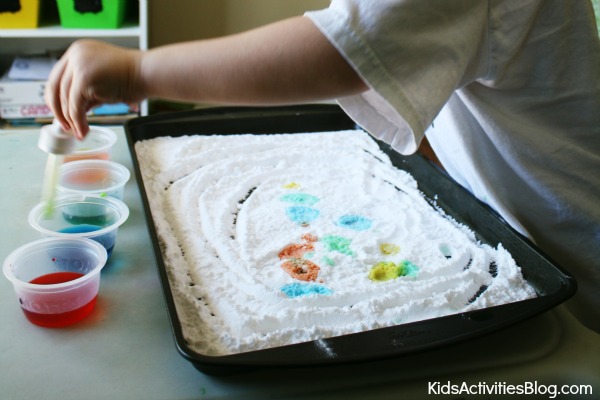
Step 3
Have the child choose a color of water, fill the medicine dropper (or spoon) and then drop the colorful vinegar onto the white baking soda surface causing a colorful fizzing reaction.
Using a medicine dropper in an activity like this provides practice for small motor skills and hand-eye coordination for little hands.
My little guy didn’t need any instructions on what to do. Natural curiosity soon took over! This is one of the best ways to have hands on experience with the concept of a chemical reaction.
Let’s make some fizzy paintings!
Baking Soda And Vinegar Art Science Experiment
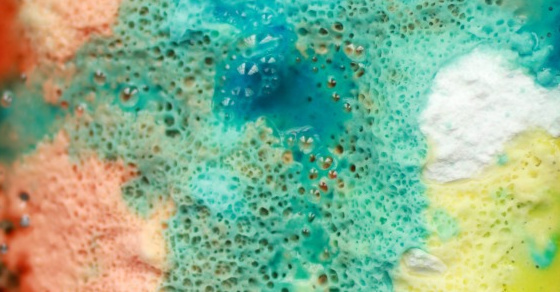
When you make art with baking soda and vinegar, you combine the creativity of an art project with a classic science experiment!
Materials
- Vinegar
- Baking Soda
- Food Coloring
Tools
- A plastic plate or tray
- An eye dropper
Instructions
- Mix Vinegar and food coloring in small cups
- Spread baking soda on the plate or tray
- Give your child the eye dropper, and the cups of colored vinegar.
- Let them drop colored vinegar onto the baking soda.
- Watch the magic!
Recommended Products
As an Amazon Associate and member of other affiliate programs, I earn from qualifying purchases.
What happens when you mix vinegar and baking soda?
Mixing vinegar and baking soda is a great way to create a reaction resulting in bubbly foam which can be used for all sorts of fun activities. This combination is often used in magic tricks, school science experiments, and even household cleaning projects. When vinegar and baking soda are mixed together they create an acid-base reaction that causes the release of carbon dioxide gas. This is what makes the bubbles, or foam as it’s often called. The reaction also creates water and sodium acetate, but these are not visible to the naked eye.
How much vinegar do you use for baking soda and vinegar experiment?
In the baking soda and vinegar experiment we did in this article, there is no set ratio of baking soda to vinegar. In the traditional baking soda and vinegar experiments for kids, it is generally 2:1 meaning two parts baking soda to 1 part vinegar.
What did I do wrong if my experiment isn't very foamy?
If you use too much vinegar it may not produce as much foam as you want for your baking soda and vinegar experiment. Try again with less vinegar and see how it turns out!
What are some possible hypothesis for baking soda and vinegar experiments for kids?

- The reaction between baking soda and vinegar will become more intense if more vinegar is added.
- Temperature changes will impact how quickly the reaction between baking soda and vinegar occurs.
- The rate of the reaction between baking soda and vinegar will vary depending on different concentrations of baking soda or vinegar.
- The amount of foam created by a reaction between baking soda and vinegar can be measured in order to compare the intensity of different reactions.
- Different types of containers can lead to differing results when using baking soda and vinegar together in an experiment.
Use our scientific method for kids worksheets to easily explore what a hypothesis means and how to test it.
Variation on Baking Soda And Vinegar Activity for Sensory Play
This baking soda and vinegar project is now one of our favorite sensory activities because we can play with the leftovers of the colourful chemical reactions.
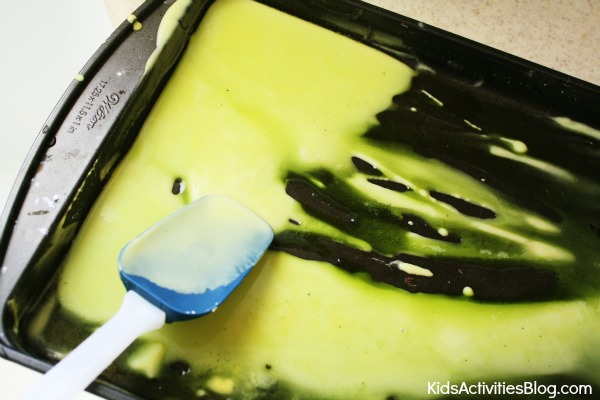
- Once most of the baking soda had been fizzed out by the carbon dioxide bubbles, we added a bit more vinegar to the baking soda left on the baking sheet and mixed it up just to see what happened to the resulting substance.
- The result was a really odd concoction. It was a liquid-like slime. Some of it was really runny, while the rest was thicker and chalky.
- To take it a step further, we decided to explore this gooey substance.
- My four-year-old helped me scoop and pour it into a large Ziploc bag. Then we had fun squishing it with our feet!
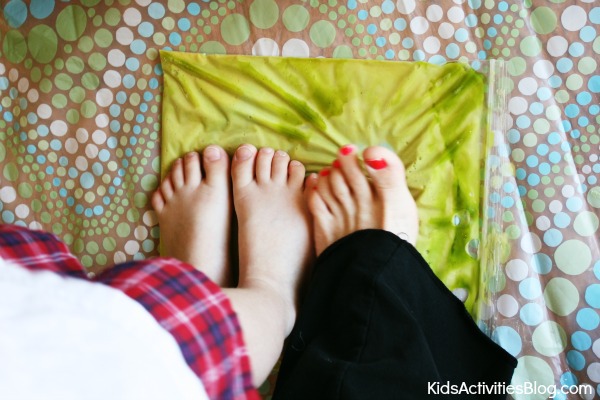
Related: Oh so many fun sensory bags you can make
This activity definitely put a new (and gooey) twist on a classic. It’s one that we’ll definitely be doing again!

The 101 Coolest Simple Science Experiments for Kids
We wrote the book on science that makes everything easy and fun!
If you’re looking for more fun STEM ideas, check out our amazing book: The 101 Coolest Simple Science Experiments: Awesome Things To Do WithYour Parents, Babysitters, and Other Adults it guarantees hours of educational fun.
Related: Make a battery train
More Fun With Baking Soda and Vinegar Reactions
- Let’s explore more classic experiment fun with baking soda and vinegar reaction activities.
- Make fizzy dinosaur tracks in this fun baking soda and vinegar science activity for kids.
- Try this fun and easy dancing raisins experiment for kids.
- Use baking soda to make ice slime.
- How about some fizzy sidewalk paint?
- We have a really fun science project that explores acids and bases for kids in a colorful way.
- Let’s use our new science knowledge to make a baking soda and vinegar volcano.
- Or explore further the baking soda and vinegar chemical reaction with this fun idea.
- Check out how to mail something you never thought you could mail!
- Make your own crystals with borax and pipe cleaners!
How did your baking soda and vinegar experiment turn out? Did you have bright colorful vinegar drops that transformed into fizzy art?

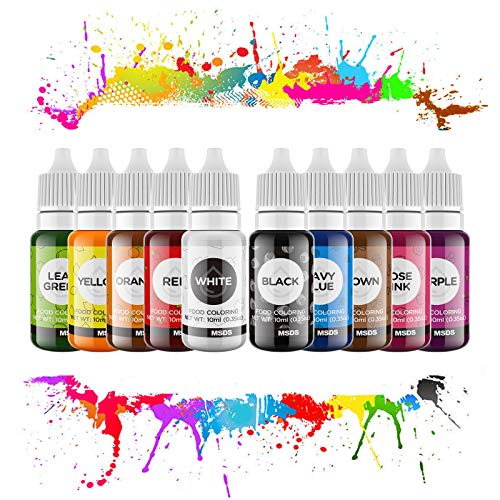
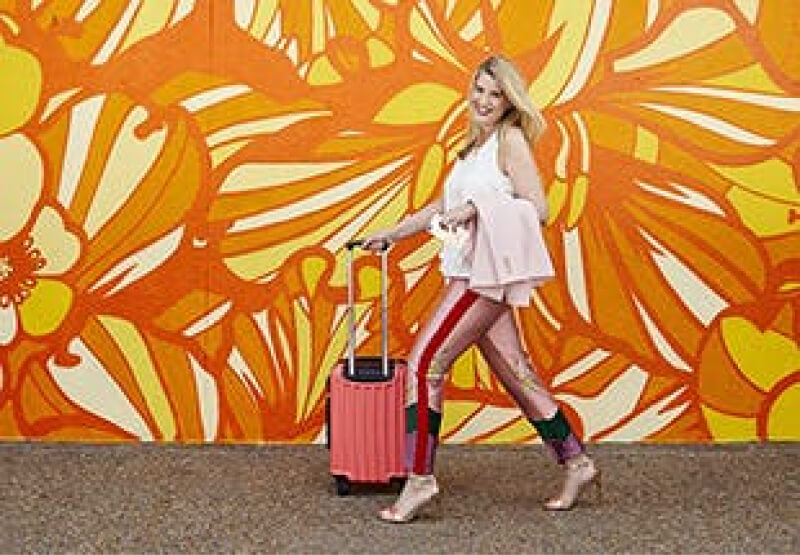
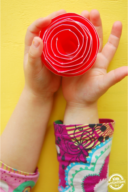

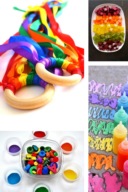
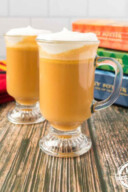
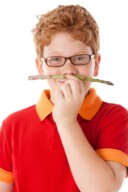
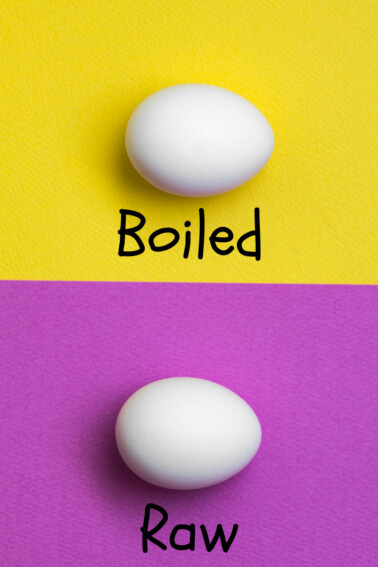
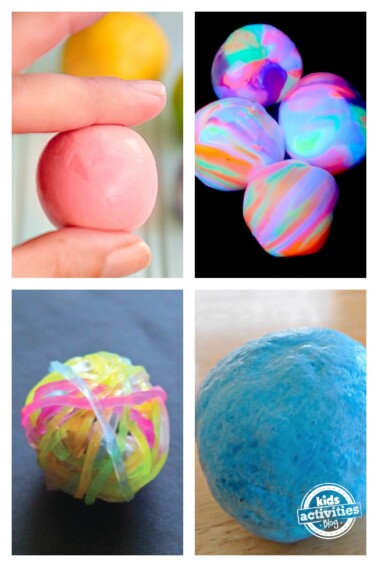
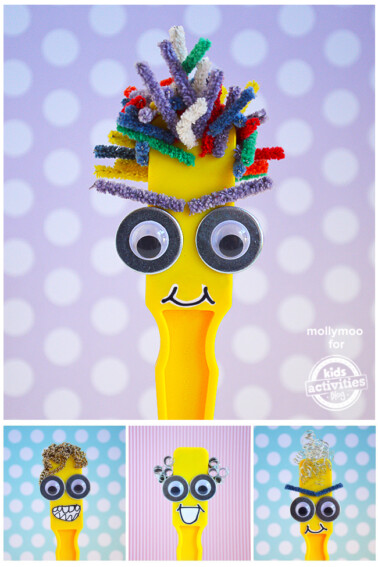











Fantastic activities, Andie! I love that you got creative and experimental with it and had fun in a whole new way!
Baking soda is definitely great to have on hand. Love how you made this a fun sensory activity too!
very sweet Andie! I love fizzle activities with my son!